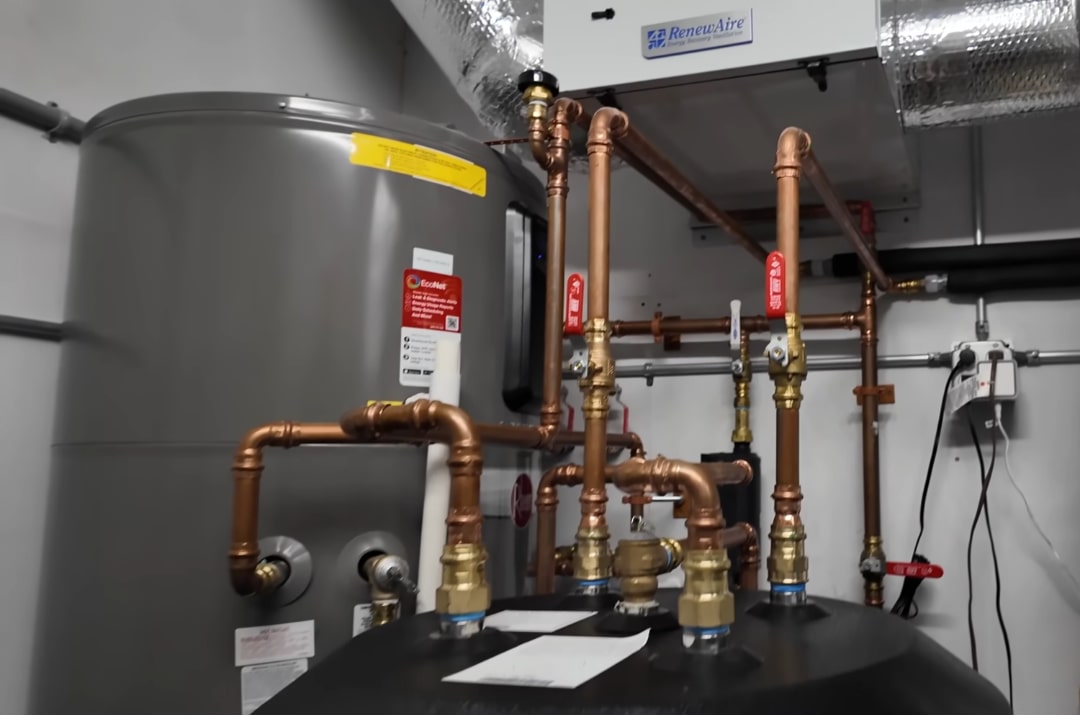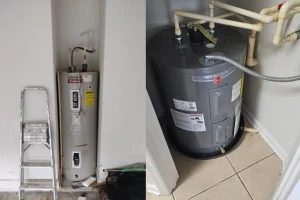Are you getting ready for a water heater replacement in Orlando? Before jumping into the project, ensure your home is prepared for it.
When you take the time to get things in order beforehand, it ensures that the replacement process goes smoothly and minimizes the risk of complications along the way.
So, what’s on the preparation checklist? Clearing space, turning off utilities, and securing your furry friends are just a few must-dos. But there are some others to include in the list. Learn more about how to prepare your home before a water heater replacement.
Steps to Ready Your Home for Water Heater Replacement
Here is the complete checklist highlighting all the essential steps and tips to help you navigate the process with ease and confidence.
1. Clear the Space From Any Obstacles
Before you replace your water heater, clear the space around it from any obstacles. Remove furniture, boxes, or clutter that might be in the way.
This gives the technicians enough room to work safely and efficiently. Make sure there’s a clear path from the entrance to the water heater location so they can easily bring in the new unit and remove the old one without any hindrance.
It will help the installation process go smoothly and prevent accidents or damage to your belongings.
2. Secure Pets & Children
When preparing for a water heater replacement service, it’s essential to secure your pets and children. This ensures their safety and prevents any disruptions during the installation process.
Pets can get curious and may unintentionally interfere with the technicians’ work or put themselves in harm’s way. Similarly, children may be attracted to the activity and wander into the work area, posing a risk to themselves and others.
Consider confining pets to a separate room or area away from the installation site, and supervise children closely or arrange for them to stay with a trusted caregiver during the replacement. It will ensure a smooth and hazard-free process for everyone involved.
3. Verify There’s Enough Support For New Water Heater
In preparation for a water heater replacement, it’s crucial to verify that there’s enough support for the new unit.
Water heaters can be heavy, especially when filled with water. So ensuring adequate support is essential to prevent accidents or damage. Check that the floor beneath the installation area is sturdy and level.
If your new water heater is larger or heavier than the previous one, consider installing additional support such as a platform or bracing.
This helps distribute the weight evenly and reduces the risk of structural damage over time.
4. Ensure The Gas & Water Accessibility
Another important step is to ensure that you have easy access to both the gas and water connections. Take a look at the location of the current water heater and check if the gas supply line and water pipes leading to it are easily reachable.
Make sure there are no obstacles blocking access to these connections. If there are any tight spaces or obstructions, consider clearing them out to make the installation process smoother for the technicians.
Additionally, if any repairs or adjustments are necessary, it’s best to take care of them before the replacement to avoid delays.
5. Turn Off Utilities
Before beginning the task, remember to turn off the utilities. This includes shutting off the gas or electricity supply to the water heater, as well as turning off the water supply to prevent any leaks or accidents during the installation process.
Locate the appropriate shut-off valves for these utilities and ensure they are securely closed. Turning off the utilities not only ensures the safety of the technicians performing the replacement but also helps prevent any damage or hazards while the work is being carried out.
6. Drain the Tank
It’s important to drain the tank completely to prevent spills and leaks during the removal process. This step ensures that the tank is empty of water, reducing the weight and making it easier to handle.
Start by turning off the cold water supply valve leading to the water heater. Then, attach a garden hose to the drain valve located near the bottom of the tank.
Direct the other end of the hose to a suitable drainage location, such as a floor drain or outside area. Open the drain valve and allow the water to flow out of the tank until it’s completely empty.
7. Inspect Surrounding Components
Along with other considerations, inspect the surrounding components and infrastructure. Look for any signs of damage, such as corroded pipes, leaky valves, or worn-out fittings.
Addressing these issues before installing the new water heater prevents future problems and ensures a smooth installation process. Additionally, make sure the area where the new water heater will be installed is clean and free of debris.
Frequently Asked Questions (FAQs)
How long to wait to use hot water after installing a new water heater?
A properly installed gas hot water heater typically provides hot water quickly. A 40-gallon heater takes about 30-40 minutes to heat water, while an 80-gallon tank takes approximately 60-70 minutes.
How long does a hot water heater take to replace?
On average, a professional installation typically takes between 2 to 4 hours. However, this timeframe may be longer if additional plumbing work or modifications are required.
How much space do the plumbers need?
Plumbers typically require ample space to work safely and efficiently during a water heater replacement. A clear area of about 2 to 3 feet around the water heater is usually sufficient.
In Closing!
As you wrap up your preparations for the water heater replacement service in Orlando, remember the importance of laying the groundwork for a seamless process.
By ensuring your home is prepped adequately, you’re not just mitigating potential challenges but also prioritizing safety for your household. From clearing space to turning off utilities and insulating pipes, each step plays a crucial role in the success of the replacement project.
So make sure you are following up on each of the instructions above and ready to enjoy uninterrupted hot water in your home for years to come!




